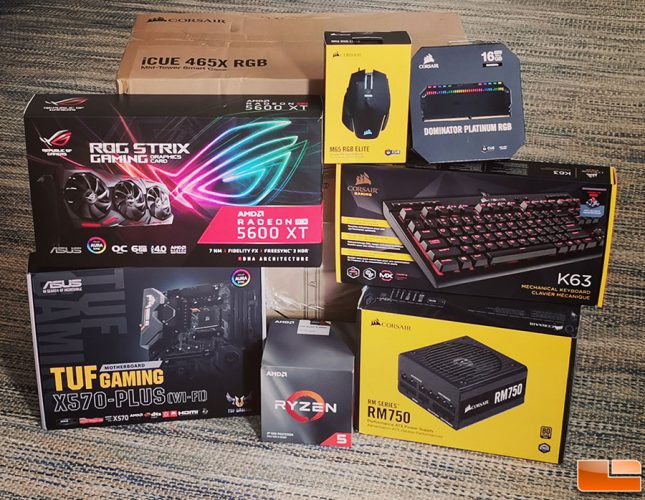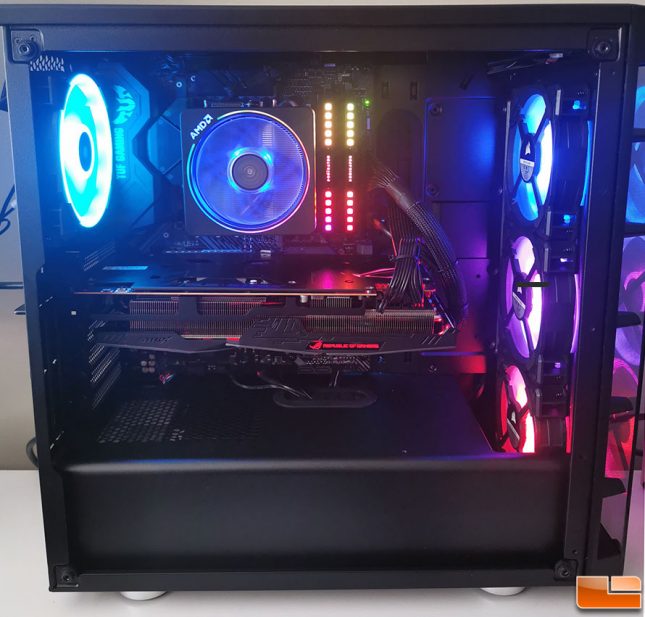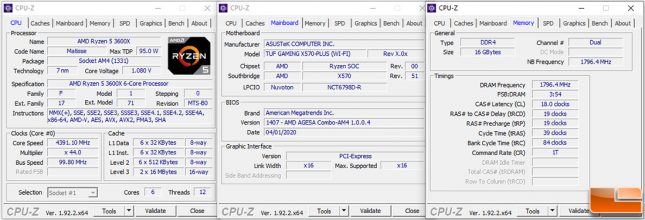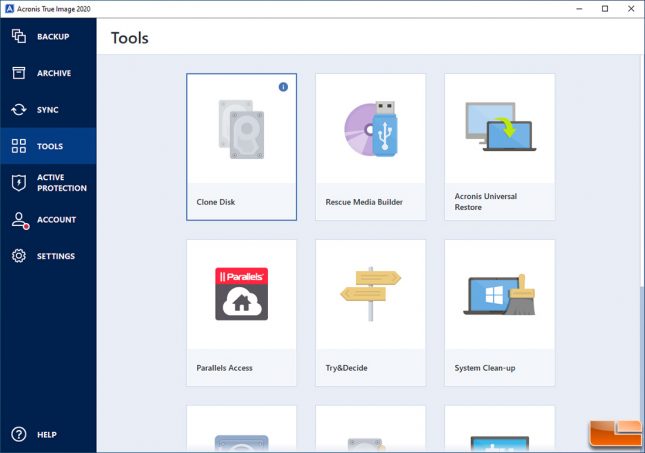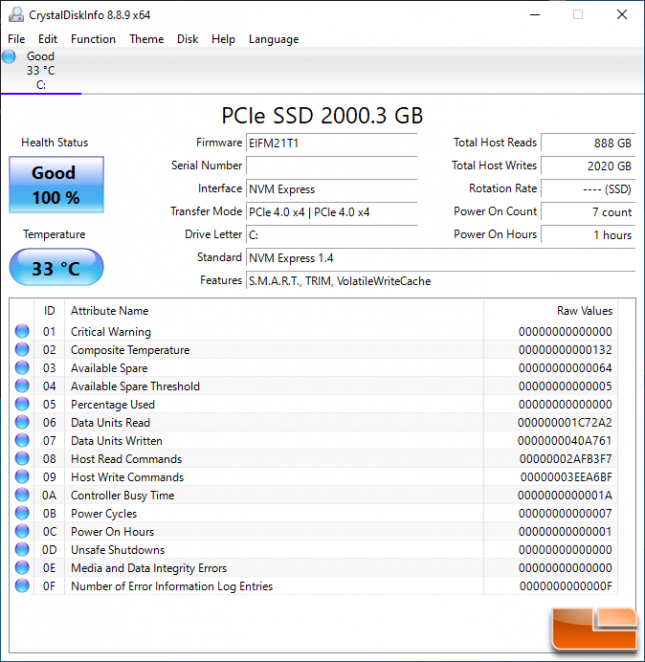Phison PS5018-E18 2TB Development SSD Review
The SSD Benchmark Test System
Before we look at the numbers, lets take a brief look at the test system that was used!
We are using an AMD X570 platform to test storage drives and custom built a system that we consider mainstream for consumers. The goal here is to have a system that relates to the average Do-It-Yourself (DIY) builder, gamer or enthusiast as we want the benchmark results to mean something. To power the system we picked the AMD Ryzen 5 3600X 6-core, 12-thread processor as it along with the Ryzen 5 3600 are hands down two of the best selling 3rd Gen Ryzen CPUs. The AMD Ryzen 5 3600X runs $204.99 shipped and the Ryzen 5 3600 is $174.99 shipped. We went with the ASUS TUF Gaming X570-Plus (Wi-Fi) motherboard ($179.99 shipped) and the ASUS ROG STRIX Gaming Radeon RX 5600 XT graphics card ($339.99 shipped). DRAM needs are fulfilled by a 16GB DDR4-3600 kit of Corsair Dominator Platinum RGB memory ($159.99 shipped) and a Corsair RM750 power supply ($119.99 shipped) powers the system. All that was placed into the Corsair iCUE 465X RGB Black case ($129.99 shipped) without issue. We went with the compact Corsair K63 mechanical keyboard ($73.99 shipped) to keep the lab bench as open as possible and the M65 RGB Elite gaming mouse ($39.99 shipped).
The total build cost is around $1,250 and that seems like a fair price for a system of this caliber and it should also look good thanks to RGB everything.
A clean install of Windows 10 Pro v1909 (build 18363.657) was installed from an ISO. The ASUS TUF Gaming X570-Plus (Wi-Fi) motherboard was running UEFI 2607 (AM4 AGESA combo V2 PI 1.0.8.0) and the DRAM was set to 3600 MHz with CL18 timings. The Infinity Fabric clock speed (FCLK) is configurable on this platform and directly relates to the memory clock (MCLK), so it was set to run a 1:1 speeds or 1800 MHz in this situation.
After setting up the primary disk the way we wanted it (disabled things like windows defender, windows update, disk fragmentation) we then used Acronis True Image 2020 ($45) to clone the drive over to the SSD being reviewed. Each drive is secure erased before the image is applied. This ensures that the operating system is setup exactly the same on every drive. The big thing to take note of here is that we are reviewing the SSD as the primary drive with data on it versus as a secondary drive without data on it. Most sites benchmark SSDs as an empty secondary drive and that is something we are not doing.
After the image is installed we then condition the drive to get it to a ready state and ensure that it is 55% filled. This number is again important because many drives now have dynamic SLC cache and the used space on the drive will impact how much SLC cache is available. All testing was done on the desktop with Windows run in high performance mode.
Drives Tested:
- Corsair Force MP600 Gen4 PCIe 1TB – $199.99 shipped
- Phison E16 controller w/ BiCS4 96-Layer TLC
- Firmware EGFM11.3
- Sabrent Rocket 4.0 1TB – $199.98 shipped
- Phison E16 controller w/ BiCS4 96-Layer TLC
- Firmware RKT401.2
- Plextor M9P+ 1TB – $134.99 MSRP
- Marvell 88SS1092 controller w/ BiCS4 96-Layer TLC
- Firmware 1.01
- Sabrent Rocket 1TB – $149.98 shipped
- Phison E12 controller / BiCS4 96-Layer TLC
- Firmware RKT303.2
- WD Blue SN550 1TB – $129.99 shipped
- WD in-house controller w/ BiCS4 96-Layer TLC
- Firmware 211050WD
- Intel SSD 665p 1TB – $129.99 shipped
- SMI 2263EN controller w/ Intel 96-Layer QLC
- Firmware 001C
- Samsung SSD 970 EVO Plus 1TB – $189.99 shipped
- Samsung Phoenix controller w/ Samsung 9x-layer V-NAND TLC
- Firmware 2B2QEXM7
- Intel Optane SSD 905P 960GB – $1,242.43 shipped
- Intel SLM58 controller w/ Intel 3D XPoint
- Firmware E2010420
- SK Hynix Gold S31 1TB – $113.67 shipped
- SK Hynix ‘Quartz’ controller w/ SK Hynix 3D-V4 72-layer 3D TLC
- Firmware 900000Q00
- HP SSD EX950 1TB – $134.99 shipped
- SMI 2262EN controller / IMFT 64-Layer TLC
- Firmware FWR1106C
- HP SSD EX950 2TB – $275.97 shipped
- SMI 2262EN controller / IMFT 64-Layer TLC
- Firmware 42A7T36A
- WD Black SN750 1TB – $134.99 shipped
- WD in-house controller w/ BiCS3 64-Layer TLC
- Firmware 102000WD
- Patriot P300 1TB – $141.57 shipped
- Phison PS5013-E13T controller w/ BiCS4 96-Layer TLC
- Firmware EDFM00E3
- Crucial P5 1TB – $179.99 shipped (MSRP)
- Micron DM01B2 controller w/ Micron 96-Layer TLC
- Firmware P4CR311
- ADATA Swordfish 1TB – $114.99 shipped
- Realtek RTS5736DL controller w/ BiCS4 96-Layer TLC
- Firmware V9002s45
- ADATA Falcon 1TB – $129.99 shipped
- Realtek RTS5762DL controller w/ BiCS4 96-Layer TLC
- Firmware V9002s40
- Kingston KC2500 1TB – $226.81 shipped
- SMI 2262EN controller w/ BiCS4 96-Layer TLC
- Firmware S7780100
- addlink X70 1TB – $159.99 shipped
- Phison E12 controller w/ BiCS3 64-Layer TLC
- Firmware ECFM22.6
- SK hynix P31 Gold 1TB – $134.99 shipped
- SK hynix Cephus controller w/ SK hynix 128-Layer TLC
- Firmware 41060C20
- Samsung SSD 980 Pro – $229.99 shipped
- Samsung Elpis controller w/ Samsung V-NAND 1xx-Layer TLC
- Firmware 1B2QGXA7
- WD_Black AN1500 AIC 2TB – $549.99 shipped
- SN730 – WD in-house controller w/ BiCS4 96-Layer TLC
- Firmware 10271043
- XPG GAMMIX S50 Lite 1TB – $139.99 shipped
- Silicon Motion SM2267 controller w/ IMFT 96-Layer TLC
- Firmware 82AT9PA
- Sabrent Rocket Q4 1TB – $319.99 shipped
- Phison E16 controller w/ Micron 96-Layer QLC
- Firmware RKT40Q.1
CrystalDiskInfo 8.8.9 Readout:
The readout on CrystalDiskInfo 8.8.9 shows that the Phison E18 development board supports S.M.A.R.T., TRIM, VolatileWriteCache and the NVM Express 1.4 feature set. Our drive was tested with firmware version EIFM21T1 installed.
In Windows 10 version 1909 the 2TB (2000.3 GB) drive showed up as 1862.3 GB in size. Please remember that 1GB = 1,000,000,000 bytes. A certain portion of capacity may be used for system file and maintenance use, thus the actual available capacity may differ from the labeled total capacity.
Let’s have a look at the performance!

